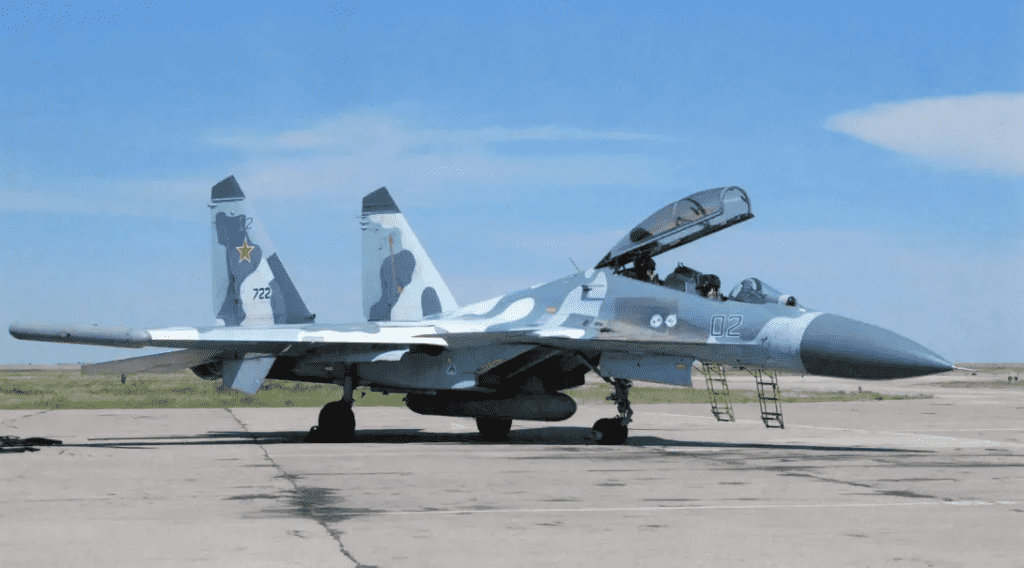As part of their military counteroffensives to the east and south, Ukrainian soldiers have acquired significant amounts of Russian weapons of various sorts.
Among the combat wreckage is a fairly complete RTU 518-PSM self-protection jamming pod. This pod is linked to the most current version of the larger Khibiny-U electronic warfare suite employed on the downed Su-30SM Flanker-H earlier in the battle in Ukraine’s northern Kharkiv area. And its capture might give useful intelligence.
“This is a 518-PSM starboard wingtip pod,” defense expert Guy Plopsky noted. It is most likely a transmitter (jammer) pod, whereas the port wingtip pod (518-LSM1) is most likely a reception pod. The two removable pods are part of the Su-30SM’s KS REP ECM suite, which includes the SAP 518-SM active ECM system.”
The RTU 518-PSM is a component of the Khibiny-U suite, which is deployed aboard Russian Su-30SM aircraft, according to a 2021 document from the Kaluga Scientific-Research Institute for Radio Engineering.
The SAP 518-SM, also known as the “complex” in Russian, consists of the internal KS REP system and two RTU 518-PSM and RTU 518-LSM1 pods on the aircraft’s right and left wingtips, respectively.
The RTU 518-PSM is supposed to feature an active jamming system, but the RTU 518-LSM1 is a passive receiver that detects dangerous electromagnetic spectrum emissions, such as those from opposing radars.
The SAP 518-SM subsystem, also known as Regata, is said to be capable of detecting, jamming, and confounding enemy radars, including those on incoming radar-guided missiles. This includes creating fake emissions using Digital Radio Frequency Memory (DRFM) technology to camouflage the actual aircraft.

The internal KS REP subsystem is designed to counter high-band threats. The SAP 518-SM subsystem appears to be designed to guard against mid-band attacks, offering a complete range of capabilities.
The Su-30SM can carry an additional pod called the SAP-14 on the centerline, which provides escort jamming capabilities for bigger aircraft groups.
It’s uncertain whether SAP-14 is a part of Khibiny-U, although it may be utilized in combination with other components of that system.
The Russian Ministry of Defense first commissioned KNIRTI, the pod’s manufacturer, to create a new electronic warfare system for the Su-30SM in 2013. The Khibiny-10V, the first iteration of the system to achieve operational service on any platform, was released a year later.
Russian SU-30SMs were first observed with Khibiny-U in 2018. Given that the pod looks to be in good condition, it might be a valuable information resource for the US and its allies in combating Russian armaments.

The computer chips and other electronics utilized in the pod and any other sections of the linked electronic warfare complex may include important industrial intelligence.
The war in Ukraine has helped foreign intelligence agencies substantially, notably in terms of Russia’s most modern electronic warfare and air defense capabilities. Many seized systems may have already been relocated to other countries for further investigation and assessment.
The potential intelligence discovery in the recent case might be much larger depending on the condition of other pieces of the electronic warfare suite aboard the wrecked jet. As a result, Ukrainian intelligence officers and their foreign allies can obtain more information in addition to the hardware.
Even before the current crisis, Ukraine was thought to be a substantial provider of Soviet-designed equipment for the American military’s so-called foreign material exploitation (FME) enterprise, including fighter jets and radars.


